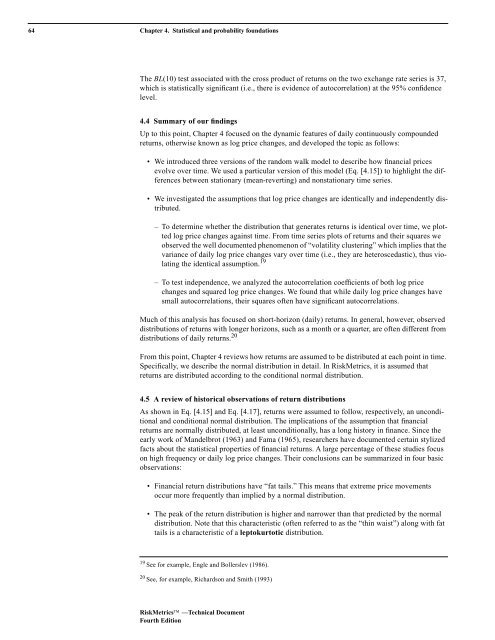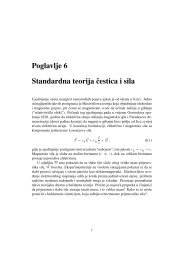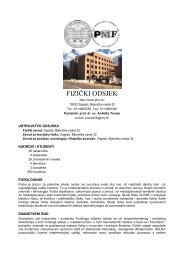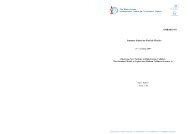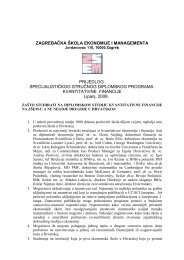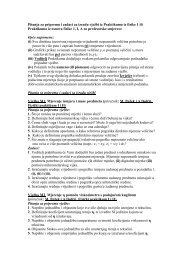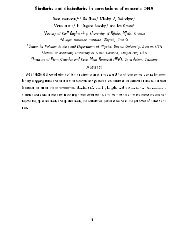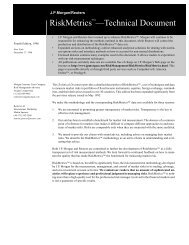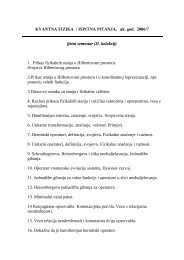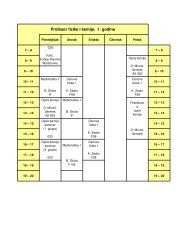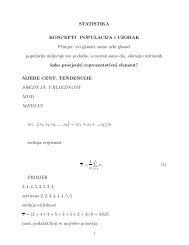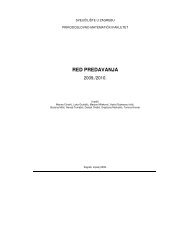RiskMetrics⢠âTechnical Document
RiskMetrics⢠âTechnical Document
RiskMetrics⢠âTechnical Document
You also want an ePaper? Increase the reach of your titles
YUMPU automatically turns print PDFs into web optimized ePapers that Google loves.
64 Chapter 4. Statistical and probability foundations<br />
The BL(10) test associated with the cross product of returns on the two exchange rate series is 37,<br />
which is statistically significant (i.e., there is evidence of autocorrelation) at the 95% confidence<br />
level.<br />
4.4 Summary of our findings<br />
Up to this point, Chapter 4 focused on the dynamic features of daily continuously compounded<br />
returns, otherwise known as log price changes, and developed the topic as follows:<br />
• We introduced three versions of the random walk model to describe how financial prices<br />
evolve over time. We used a particular version of this model (Eq. [4.15]) to highlight the differences<br />
between stationary (mean-reverting) and nonstationary time series.<br />
• We investigated the assumptions that log price changes are identically and independently distributed.<br />
– To determine whether the distribution that generates returns is identical over time, we plotted<br />
log price changes against time. From time series plots of returns and their squares we<br />
observed the well documented phenomenon of “volatility clustering” which implies that the<br />
variance of daily log price changes vary over time (i.e., they are heteroscedastic), thus violating<br />
the identical assumption. 19<br />
– To test independence, we analyzed the autocorrelation coefficients of both log price<br />
changes and squared log price changes. We found that while daily log price changes have<br />
small autocorrelations, their squares often have significant autocorrelations.<br />
Much of this analysis has focused on short-horizon (daily) returns. In general, however, observed<br />
distributions of returns with longer horizons, such as a month or a quarter, are often different from<br />
distributions of daily returns. 20<br />
From this point, Chapter 4 reviews how returns are assumed to be distributed at each point in time.<br />
Specifically, we describe the normal distribution in detail. In RiskMetrics, it is assumed that<br />
returns are distributed according to the conditional normal distribution.<br />
4.5 A review of historical observations of return distributions<br />
As shown in Eq. [4.15] and Eq. [4.17], returns were assumed to follow, respectively, an unconditional<br />
and conditional normal distribution. The implications of the assumption that financial<br />
returns are normally distributed, at least unconditionally, has a long history in finance. Since the<br />
early work of Mandelbrot (1963) and Fama (1965), researchers have documented certain stylized<br />
facts about the statistical properties of financial returns. A large percentage of these studies focus<br />
on high frequency or daily log price changes. Their conclusions can be summarized in four basic<br />
observations:<br />
• Financial return distributions have “fat tails.” This means that extreme price movements<br />
occur more frequently than implied by a normal distribution.<br />
• The peak of the return distribution is higher and narrower than that predicted by the normal<br />
distribution. Note that this characteristic (often referred to as the “thin waist”) along with fat<br />
tails is a characteristic of a leptokurtotic distribution.<br />
19 See for example, Engle and Bollerslev (1986).<br />
20 See, for example, Richardson and Smith (1993)<br />
RiskMetrics —Technical <strong>Document</strong><br />
Fourth Edition


